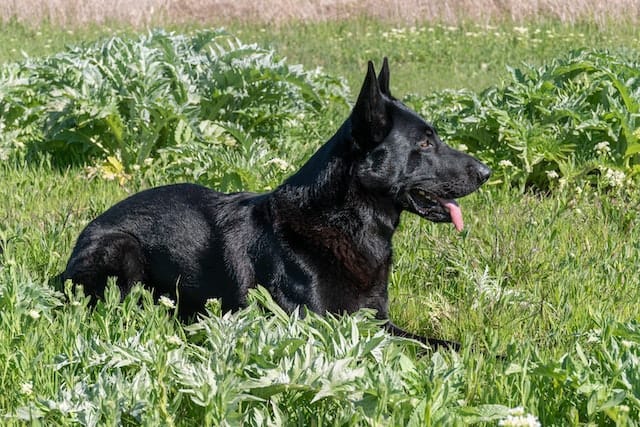Do Cavapoos Bark A Lot? How To Put A Stop To Cavapoo Barking
Do Cavapoos Bark A Lot? Hey there! So, you’re wondering if Cavapoos bark a lot. Well, let me tell you, they definitely have the potential to be quite vocal little pups. Cavapoos are a mix between Cavalier King Charles Spaniels and Poodles, and both of these breeds are known for their tendency to bark. But don’t worry, it’s not all doom and gloom. With a little bit of training and understanding, you can help your Cavapoo become a quiet and well-behaved companion.
Now, let’s dive into why Cavapoos bark and how you can put a stop to it. One of the main reasons Cavapoos bark is to communicate their needs or emotions. They might bark when they’re feeling anxious, bored, or even excited. It’s important to pay attention to the context of their barking and try to address the underlying cause. For example, if your Cavapoo barks when they’re bored, you can provide them with plenty of mental and physical stimulation to keep them occupied.
In addition to understanding the reasons behind their barking, training is also key in teaching your Cavapoo to be quiet. Consistency, positive reinforcement, and patience are your best friends here. You can start by teaching them a “quiet” or “enough” command, and rewarding them when they stop barking on cue. It’s also important to socialize your Cavapoo from a young age, as proper socialization can help them become more confident and less prone to excessive barking.
In our upcoming article, we’ll delve further into the strategies and techniques you can use to put a stop to your Cavapoo’s excessive barking. So, stay tuned and get ready to help your furry friend become the well-behaved companion you know they can be!
Understanding Cavapoos
Cavapoos: A Hybrid Dog Breed
Cavapoos, also known as Cavoodles, are a popular hybrid dog breed that is a mix between Cavalier King Charles Spaniels and Poodles. These adorable dogs are known for their friendly and affectionate nature, making them excellent companion animals. Cavapoos have gained popularity in recent years due to their hypoallergenic coats and their lovable personalities.
Characteristics of Cavapoos
Cavapoos inherit various traits from both parent breeds, resulting in a unique set of characteristics. These dogs are typically small to medium-sized, weighing between 10 to 20 pounds. They have a soft and curly coat that requires regular grooming to keep it in good condition.
One of the most attractive qualities of Cavapoos is their friendly and sociable nature. They are known for their love of people and their ability to get along well with children and other pets. Cavapoos are often described as being loyal, intelligent, and outgoing.
Cavapoos as Companion Dogs
Cavapoos excel in their roles as companion animals. They thrive on human companionship and enjoy being a part of their owner’s daily activities. These dogs make great family pets and are well-suited for individuals or families with children.
Cavapoos are highly trainable and eager to please their owners. They are quick learners and are usually responsive to positive reinforcement training methods. With proper training and socialization, Cavapoos can become well-behaved and obedient pets.
Reasons Behind Excessive Barking
Cavapoo Communication through Barking
Like all dogs, Cavapoos communicate through barking. It is their way of expressing themselves and alerting their owners to potential dangers. However, excessive barking can become a nuisance and may require intervention to address.
Boredom and Lack of Stimulation
One common reason behind excessive barking in Cavapoos is boredom and a lack of mental and physical stimulation. These intelligent dogs require regular exercise and mental stimulation to keep them engaged and prevent boredom. When they become bored, they often resort to excessive barking as a way to release their pent-up energy.
Separation Anxiety and Fear
Cavapoos are prone to separation anxiety, which can lead to excessive barking when left alone for extended periods. These dogs form strong attachments to their owners and may feel anxious and stressed when separated from them. Additionally, Cavapoos may bark excessively when they encounter unfamiliar situations or when they feel fearful or threatened.
Identifying Excessive Barking
Normal Barking vs. Excessive Barking
It is important to differentiate between normal barking and excessive barking in Cavapoos. Normal barking occurs when a dog barks to alert their owner to a possible threat or when they are excited. Excessive barking, on the other hand, is persistent and prolonged barking that serves no specific purpose.
Signs of Excessive Barking in Cavapoos
Signs of excessive barking in Cavapoos include:
- Barking for extended periods without any apparent reason
- Barking excessively when left alone or separated from their owners
- Barking excessively when encountering unfamiliar people or animals
- Barking persistently even after the cause of their distress has been resolved
If your Cavapoo is displaying these signs, it is important to address the issue to prevent it from becoming a long-standing behavioral problem.
Training and Socialization
Importance of Early Training
Early training is crucial for Cavapoos to learn appropriate behaviors and to prevent excessive barking. Start training your Cavapoo as soon as you bring them home, focusing on basic obedience commands such as sit, stay, and come. Consistency and positive reinforcement are key to successful training.
Positive Reinforcement Techniques
Cavapoos respond well to positive reinforcement techniques. Reward your dog with treats, praise, and affection when they exhibit desired behaviors. Avoid punishment-based training methods, as they can lead to fear and anxiety, exacerbating the barking issue.
Obedience Training
Obedience training is essential to establish boundaries and teach your Cavapoo proper behavior. Teaching commands such as “quiet” or “enough” can help your dog understand when to stop barking on command. Consistency and patience are key when training Cavapoos.
Socializing Cavapoos
Proper socialization is crucial for Cavapoos to become well-rounded dogs. Expose your Cavapoo to various people, animals, and environments from a young age. This will help them become comfortable and confident in different situations, reducing their tendency to bark excessively out of fear or anxiety.
Providing Mental and Physical Stimulation
Engaging Activities for Cavapoos
To prevent boredom and excessive barking, provide your Cavapoo with engaging activities. Interactive games, such as hide-and-seek or puzzle toys, can mentally stimulate your dog and keep them occupied. Engage in regular play sessions and provide opportunities for your Cavapoo to explore their environment.
Interactive Toys and Puzzle Feeders
Interactive toys and puzzle feeders can challenge and mentally stimulate your Cavapoo. These toys require problem-solving skills, keeping your dog engaged and mentally stimulated. Feeders that dispense small amounts of food throughout the day can also help keep your Cavapoo occupied and prevent boredom.
Regular Exercise Routine
Cavapoos require regular exercise to expend their energy and prevent boredom-related behaviors, including excessive barking. Take your Cavapoo for daily walks, engage in play sessions, and provide opportunities for off-leash activities in a safe and secure environment. A tired dog is less likely to engage in excessive barking.
Mental Stimulation through Training
In addition to physical exercise, mental stimulation through training is important for Cavapoos. Engage in regular training sessions to challenge your dog’s mind and provide them with a sense of purpose. Learning new commands and tricks can help prevent boredom and provide a positive outlet for their energy.
Managing Separation Anxiety
Gradual Departure and Return
To manage separation anxiety and reduce excessive barking, practice gradual departures and returns. Start by leaving your Cavapoo for short periods, gradually increasing the duration over time. This will help your dog become more comfortable and independent when left alone.
Creating a Safe Space
Create a safe and comfortable space for your Cavapoo when you’re not home. Provide them with a cozy crate or a designated area where they feel secure. Place their favorite toys, blankets, and a piece of your clothing in the space to provide comfort and familiarity.
Desensitization Techniques
Desensitization techniques can help reduce separation anxiety and excessive barking. Gradually expose your Cavapoo to triggers that cause anxiety, such as picking up your keys or putting on your shoes before leaving. Pair these triggers with positive experiences, such as giving your dog a special treat or engaging in a fun activity, to help them associate these triggers with positive outcomes.
Seeking Professional Help
If your Cavapoo’s separation anxiety and excessive barking persist despite your efforts, consider seeking professional help from a dog trainer or behaviorist. These professionals can assess your dog’s behavior and provide personalized guidance and strategies to address the issue effectively.
Addressing Fear-Based Barking
Desensitization and Counter-Conditioning
Fear-based barking in Cavapoos can be addressed through desensitization and counter-conditioning techniques. Gradually expose your dog to the source of their fear, such as unfamiliar people or loud noises, at a distance where they feel comfortable. Pair these experiences with positive reinforcement, such as treats and praise, to change their emotional response from fear to positivity.
Identifying Triggers and Avoidance
Identify triggers that cause fear-based barking in your Cavapoo and take steps to avoid them whenever possible. For example, if your dog becomes anxious or fearful around certain people or in crowded environments, consider limiting their exposure to these situations to prevent excessive barking.
Establishing a Calming Environment
Create a calming environment for your Cavapoo by providing them with a safe and comfortable space. Use soothing music or white noise to mask outside sounds that may trigger fear-based barking. Provide them with comforting items such as a favorite blanket or a lavender-scented calming spray.
Using Effective Bark Control Methods
Citronella Spray Collars
Citronella spray collars are a safe and humane way to address excessive barking in Cavapoos. These collars emit a burst of citronella spray when the dog barks, which is unpleasant and deters them from continuing to bark excessively. However, it is important to use these collars as a last resort and in combination with other training techniques.
Ultrasonic Devices
Ultrasonic devices emit a high-frequency sound that is inaudible to humans but can be unpleasant for dogs. These devices can be used to deter excessive barking in Cavapoos. When your dog barks, activate the device to emit the sound, which may discourage them from barking further. It is important to use these devices responsibly and in conjunction with positive reinforcement training.
Positive Reinforcement for Quiet Behavior
Positive reinforcement training techniques can also be used to address excessive barking in Cavapoos. When your dog stops barking on command or exhibits quiet behavior, reward them with treats, praise, and affection. This reinforces the desired behavior and encourages your Cavapoo to bark less frequently.
Consistency and Patience in Training
Establishing a Routine
Consistency is key when training your Cavapoo. Establish a routine that includes regular exercise, training sessions, and mental stimulation. Stick to this routine as closely as possible to help your Cavapoo understand what is expected of them and to create a sense of structure and predictability.
Reinforcing Good Behavior
Reinforce good behavior in your Cavapoo by rewarding them when they exhibit calm and quiet behavior. Use treats, praise, and affection to let them know that their behavior is desirable. Consistency in reinforcing good behavior will help them understand what is expected of them and encourage them to bark less.
Avoiding Punishment
Avoid punishing your Cavapoo for excessive barking. Punishment can cause fear and anxiety, exacerbating the barking issue and damaging the trust between you and your dog. Focus on positive reinforcement training techniques, which reward desired behavior and promote a healthy and positive relationship with your Cavapoo.
Conclusion
Understanding Cavapoos and their barking behavior is essential to address excessive barking effectively. By implementing early training, providing mental and physical stimulation, managing separation anxiety, addressing fear-based barking, using effective bark control methods, and practicing consistency and patience in training, you can help put a stop to excessive barking in your Cavapoo. Building a strong and trusting relationship with your Cavapoo is key to successfully addressing their barking behavior and ensuring a harmonious life together. So, embrace the challenge and enjoy the journey of training and bonding with your beloved Cavapoo!











